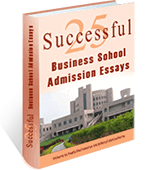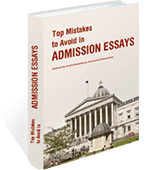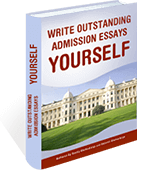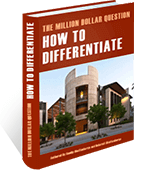
Client Admitted to Stanford Business School
Creating a great technological company matters the most to me. My vast experiences in the hitech industry in Silicon Valley and exposure to several Fortune 500 companies have inspired me to create a great hi-tech company that will create innovative electronics products. Such products will empower millions of users around the world and make their life much easier than what it is now.
Moreover, my experience in Sony opened my eyes to the world of cutting-edge products. As a technocrat, I have researched extensively on various technologies and contributed immensely on various product developments. In the process, I also thought about various ideas and also discussed with my close associates on how to launch a company in order to materialize few of our ideas. In 2012, I finally relocated to India and launched my dream venture. I and other cofounders selected few brilliants ideas and worked days and nights to roll out our maiden product for the Indian education sector. It had the power to transfer how children between the ages of six to ten would learn. Our interactive platform would engage the students and give them relief from the boredom of classroom based studies. The initial responses from various schools were excellent and we vigorously marketed our solutions. However, six months down the line, I realized that our cash flow was far less than the projected revenue figure. Desperate for finance, I networked with various VCs and banks; but, could not secure enough cash that could save the venture.
They say that failure is the pillar of success. I have learnt a lot from the failure of my first venture. Upon reflection, I also realized that my work experience in the Silicon Valley has etched an indelible mark in my DNA. Stories of successful companies such as Sun Microsystems, LinkedIn and Netscape resonate in my heart. I have witnessed how these companies have changed the course of history. I also want to create a successful venture and become a game changer in the Silicon Valley.
Moreover, I am passionate to solve multidisciplinary problems. I want to create software products that will solve real world challenges in the industry such as how to make marketing more data driven instead of pure instincts of brand managers or how to leverage analytics to formulated market penetration strategy. This kind of problems would need expertise on a lot of subjects such as consumer behavior, brand awareness, marketing, advertisement, etc. and that attracts me to the Stanford MBA program. I dream to brainstorm on multi-disciplinary subjects with my globally diverse peers in the Stanford GSB Behavioral Lab.
Moreover, I have come across a medical condition called “Synesthesia” in which all our senses become merged into one and they overall create a halo effect on human beings. For instance, companies like Google, Microsoft and Facebook have “Os” in their names. Is that the secret of their branding success? I would like to brainstorm with neurological experts from Stanford School of Medicine. If my hypothesis is correct, then we can make branding a more data driven science compared to what it is today.
I believe that Stanford would help me to attain my career objectives of successfully launching a start-up in the Silicon Valley. Eventually, I aspire to become a venture capitalist who would evaluate innovative ideas and change the world. It will provide me numerous resources under one roof. I am determined to make most of my experience, brainstorm on innovative ideas with global peers and faculty members and launch my new venture post my MBA.
I have been inspired by a multitude of people in my life. However, it is the venerable trio of technology visionaries: Vinod Khosla, Reid Hoffman and Marc Andreessen, that has left an indelible impression on my mind. With Sun Microsystems, LinkedIn and Netscape respectively, each of them not only built an admirable technology company but also successfully metamorphosed into highly accomplished investors and venture capitalists. Building a high growth, future ready enterprise and eventually donning the hat of an investor to help other ambitious entrepreneurs succeed in their own ventures is how I REALLY envision my future.
On a contemplative weekend a few months ago, I noticed something interesting. Great consumer technology brands like Google, Microsoft, Facebook and Yahoo have something else in common. They all have one or more ‘O’s in their names. Could a multisensory neurological condition called ‘Synesthesia’ ( a condition where multiple senses like visual shapes and sound get intertwined) have a correlation with building a successful brand identity, considering the fact that our mouths make a more rounded shape when pronouncing these names? More importantly, if my hypothesis could be validated, could it be used to build software that would make brand building more affordable and data driven? It is multidisciplinary problems like these that have always excited me. It would indeed be awesome if I could brainstorm on such a problem with experts at the GSB Behavioral Lab and the Stanford School of Medicine, collaborate over caffeine with a cross-functional team of classmates at the Stanford Venture Studio to bring the idea to fruition and pitch it to Vinod Khosla to seek advice.
Despite tasting limited commercial success in my first entrepreneurial venture, the passion to build a great technology company has not wavered and I continue to seek the next disruptive idea. But, I am committed to doing it better this time. Equipping myself with a robust analytical framework for assessing market opportunities, building an organized approach to address the micro and macro challenges of operating a company and refining my go-to market and sales strategies are all steps I view as crucial to realizing my vision. And, I am confident that I would be able to add each of these elements to my repertoire at Stanford GSB. However, the tenacity to embrace risk when others seek refuge is the single most important quality that I seek to imbibe during my time there and having been situated at the epicenter of hi-tech entrepreneurship since it all started, Stanford GSB was undoubtedly the most natural choice.
I cannot wait to walk down the alleys of Knight Way. After all, it is the surest way to prepare for the marathon from the edges of Silicon Valley to the heart of Sand Hill Road.
If you are a serious applicant, you would do well to review both the client’s basic draft and the final essay I created after elaborate brainstorming and 3 rounds of meticulous editing. Compare the introduction, conclusion and the overall flow of ideas between the two.
Brainstorming with this client helped me to identify areas in which I can provide useful insights in my capacity as a strategy consultant for over a decade. As an admission consultant, I work with numerous applicants and helped the client understand what other applicants generally write and how he must differentiate himself from others. Based on my advice, he avoided the commonplace things and came up with something that was both original and refreshing. Repeated editing helped me narrate his story in a far more effective and convincing manner than would otherwise have been possible. I was able to showcase his maturity and story-telling abilities.
In the end, my partnership with this applicant turned out to be fruitful as he was admitted into Stanford GSB.
It is not without reason that the more civilized and developed societies around the globe give primacy to the freedom of expression in their ethical, social, and political value systems. Psychologists universally agree that every human being is naturally endowed with the gift of creativity, and I firmly believe that it is through the nurturing and flowering of this gift that individuals and societies symbiotically prosper. It might just be possible that there is a latent Socrates or Galileo or Ayn Rand in many of us, but how many of us possess the courage of our convictions to stand up against the might of majority opinion? Fear of rejection, like an ogre, nips our latent genius in the bud. We become just like everybody else, standardized cogs in the social machine.
It follows, therefore, that the way to both personal and collective advancement is to let a hundred flowers bloom, of course without crushing them when they do so! Let me take an illustrative example. I head an organization. It is not doing as well as I expected, and I want it to move forward at a faster and more competitive pace. I need ideas, a whole pool of them – tested ideas and untested ones, new ideas, daring ideas, out-of-the-box and improbable-sounding ideas. I want them all before I make my choice, because the more my choices, the greater the probability that I will find just what I am looking for, rather than a mere approximation of what I want. What do I do? Do I shut my cabin door, hang a Do Not Disturb sign on it, put on my thinking cap, and sit at my table thinking? After all, I am the boss, it is I who should be the ‘ideas’ man, it is I who should give the lead. Or do I call up all my senior executives and whoever else in the organization fits the bill, and get down to a solid brainstorming session?
When one compares the two options, how limited and exclusive the first one is; and how full of possibilities and inclusive is the second one! What the first option, in effect says, is, ‘This is my organization – you are here to do my bidding.’ It is an egotistical approach with which the employees will be at pains to identify. What the second option says is, ‘This is our organization. Let’s do things together.’ There is more respect for another here, and a greater appreciation of one another’s abilities that in turn foster a sense of belonging and make each member of the group strive for excellence. Creativity happens by itself – ideas tumble out, and the chances are that, somewhere in the heap of views that are so freely expressed, there lies the seed of the perfect solution for the problem at hand.
I believe it is precisely the lack of openness to what others might have to say, and the contribution they might be able to make that, by and large, has stifled innovation in India. As Narayan Murthy, the revered co-founder of the Indian multi-national Infosys has potently observed, not a single good innovation has come from India in the last decade. This is in sharp contrast to the prevailing situation in developed nations like the USA, where the sanctity accorded to the individual has resulted in a society that is forever pushing back the boundaries of creative endeavour in every field of human activity.
Now to come to our own family business: it relates predominantly to the industrial sector, and is run jointly by my father and my father-in-law. They are awesome leaders in their own way, no doubt, but over the past few years our business has begun to lose its fizz. Why? Because new businesses are coming up, which are run in new ways, using new technologies like E-commerce and IT, to which we had turned a blind eye. The dinosaur, they say, disappeared because it could not adjust to climate change. The industrial climate, too, had changed, and it took a great deal of convincing before I could make my father and father-in-law agree to venture into new sectors. I persuaded them to invest in new companies. The returns told their own story – they were higher than was expected in any other industrial sector. And there was an additional benefit: we got hands-on knowledge on IT and e-Commerce.
When you let a hundred flowers bloom, its fragrance spreads far and wide!
As per Stanford GSB’s evaluation criteria, the school seeks demonstrated leadership potential. But, isn’t that all B-schools look for leadership potential? The answer is “yes and no” – quite an ambiguous phrase, isn’t it? There are some unique nuances to Stanford’s concept of leadership that you should know about in order to showcase leadership effectively in your application. Let’s try to decipher what Stanford means by “demonstrated leadership potential”. Lets take word by word for our analysis.
You must showcase what impact(s) you have made till date to your organization(s). Actions speak louder than words. Provide concrete evidence to convince the admissions committee that you have left an indelible mark in your organizations. Describe what you accomplished, how you challenged the status quo and what changes you have implemented. Stanford GSB admissions officers should be able to visualize you in action while reading the applications essays.
Leadership is an umbrella word. There are numerous aspects of leadership such as communication, coordination, collaboration, managing scope/schedule/cost/priorities of a project, controlling quality, handling personality conflicts, mentoring, networking and so on.
But how does Stanford defines leadership? As per GSB, leadership must be guided by ideal, even in difficult circumstances. That is what they call “directed idealism.” To provide meaningful leadership, you must have a core set of values that must guide you, just as the North Star used to guide sailors in old days. However challenging any project might be or whatever ethical dilemma you might have faced, Stanford expects that you showcase consistent actions that are driven by values.
Business leaders, especially the ones who are in top positions in global corporations and renowned non-profits, amass immense power. Common people generally view them as role models. Our society, in general, places huge responsibilities on the shoulders of such leaders. Corporate scandals, misuse of office or lapse in moral and ethical dimensions by corporate bosses send a wrong signal to the society at large. Hence, Stanford aspires to create a crop of leaders who will understand their tremendous responsibilities and act accordingly.
As an applicant to Stanford GSB, keep these points in mind while selecting your leadership stories.
Stanford wish to see that you always walk the extra mile to accomplish your goals. You have the “fire in the belly” to become one of the top leaders in the industry. You are in constant look out to broaden your leadership horizon and grow as a leader. Hence, you network with senior leaders, read books of management gurus, and brainstorm with your peers to understand various issues of management.
Moreover, you are open to critique. You gracefully accept feedback and realize that constructive criticism is one of the best ways to know how others’ perceive you.
As you can see, the definition of “Demonstrated Leadership Potential” of Stanford is little different from those of other B-schools. Integrate these points into your entire application in order to differentiate from hundreds’ of other application.
Stanford is one of the most selective B-schools in the world. For the Class of 2019, it admitted only 6% of all applicants. So, an astonishing 94% of the applicants were rejected in the gruesome selection process. And many of these rejects have excellent academic and professional career. They are smart and accomplished. Yet, they were rejected. So how can you showcase to Stanford that you have all the necessary qualities that it is looking for. Let us walk you through Stanford’s evaluation criteria and give you some advice.
The very first point is intellectual vitality. Now, how do you define “intellectual vitality”? It has three fundamental parameters. They are:
Ideas fascinate you! You embrace change and are always interested to know the next big idea. You scout for cutting-edge ideas that have the potential to change the status quo. You have the intellectual curiosity to dig out more about any idea in order to push the boundaries and explore new territories. How can it be utilized to make thing better? How can it change our existing beliefs? What will be the ripple effect of implementing this idea? Is this idea going to give us a new lens to see things in a different light? You think for countless hours for all such possibilities.
You are ever curious like a child! You have a brilliant mind to probe into things. You are always comparing and contrasting things. You are trying to find out the reasons behind any event, however small or insignificant it might be. You always try to understand the background information behind everything in order to understand patterns. You try to understand the past in order to predict what might happen in the future. You try to comprehend the overlaps between disparate points and differences between similar ones. For you, engaging in such a mentally stimulating exercise is fun as well as passion. You are ever enthusiastic to know what you might find at the end of the tunnel. It’s a thrilling journey for you. And you do inspire others to join you in that journey.
You have an independent mind that is uncluttered from others’ opinion. You always talk to numerous bright individuals to listen to their opinions. But, you make your own judgement. You think something is correct not because your family or friends believe that. You always analyse things from multiple angles using numerous lens and form your own conclusion. Thereafter, you are not afraid to act as per your belief.
However, you are also not scared from being challenged on your ideas. In fact, you welcome such an intellectual exercise. You are passionate to listen to others’ viewpoint and then you put forward your own ideas. You’re a skilful devil’s advocate, and able to argue from multiple perspectives. You relish comprehending what drives and underlies opposing ideas and beliefs (there’s that curiosity again).
The above mentioned three points defines intellectual vitality in a nutshell. Now, how do you let Stanford’s admissions team know that you have the necessary intellectual vigor and vitality? Your application essays are the perfect place to showcase these qualities. Compose engaging essays, narrate your ideas in detail, and articulate all aspects of your argument with fascinating anecdotes. Luckily, if you are invited to an interview, you will get a golden opportunity to showcase the entire spectrum of your intellectual vitality to Stanford.
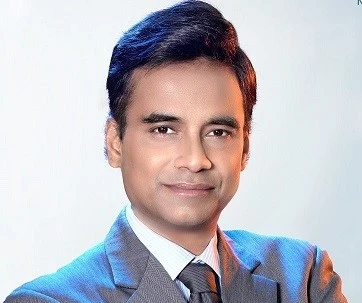
Click here to review my clients’ feedbacks, including video testimonials!
